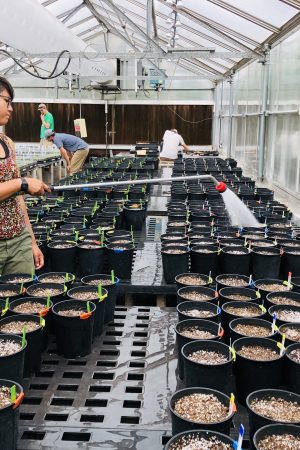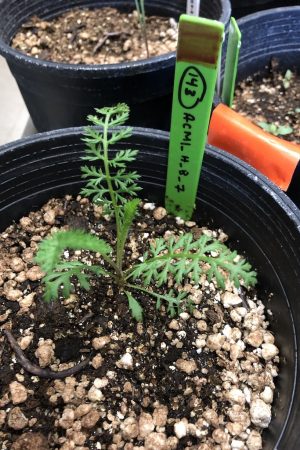Trait ontogeny and the regeneration niche – why do some species used in restoration survive drought while others do not?
Purpose: Seedling recruitment is a key barrier to restoration success in degraded dryland ecosystems. Selecting species with traits that allow for seedling persistence during periods of low water availability may be important for promoting recruitment success, particularly in the face of climate change. In collaboration with scientists at the US Geological Survey Southwest Biological Science Center and Northern Arizona University, I am conducting a large greenhouse experiment to test how seedling traits shift during early stages of plant recruitment and how shifts in seedling trait values (especially root traits) may affect restoration success across degraded rangelands in the Southwestern US.
Plant species: Dryland plant species commonly used in restoration: Linum lewisii, Pascopyrum smithii, Achillea millefolium, Dalea candida, Bouteloua gracilis, Poa Secunda, Penstemon palmeri
Participants
Caroline Havrilla (USGS/NAU)
Seth Munson (USGS)
Brad Butterfield (NAU)
Kathleen Balazs (NAU)
Funding: RAMPS

